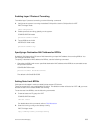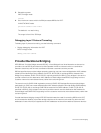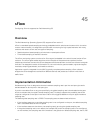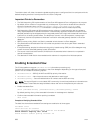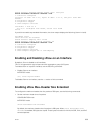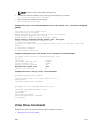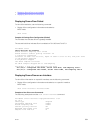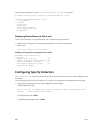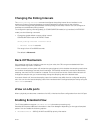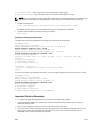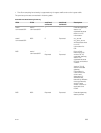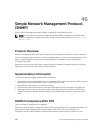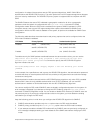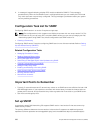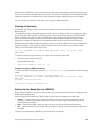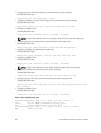Changing the Polling Intervals
The sflow polling-interval command configures the polling interval for an interface in the
maximum number of seconds between successive samples of counters sent to the collector.
This command changes the global default counter polling (20 seconds) interval. You can configure an
interface to use a different polling interval.
To configure the polling intervals globally (in CONFIGURATION mode) or by interface (in INTERFACE
mode), use the following command.
• Change the global default counter polling interval.
CONFIGURATION mode or INTERFACE mode
sflow polling-interval interval value
– interval value: in seconds.
The range is from 15 to 86400 seconds.
The default is 20 seconds.
Back-Off Mechanism
If the sampling rate for an interface is set to a very low value, the CPU can get overloaded with flow
samples under high-traffic conditions.
In such a scenario, a binary back-off mechanism gets triggered, which doubles the sampling-rate (halves
the number of samples per second) for all interfaces. The backoff mechanism continues to double the
sampling-rate until the CPU condition is cleared. This is as per sFlow version 5 draft. After the back-off
changes the sample-rate, you must manually change the sampling rate to the desired value.
As a result of back-off, the actual sampling-rate of an interface may differ from its configured sampling
rate. You can view the actual sampling-rate of the interface and the configured sample-rate by using the
show sflow command.
sFlow on LAG ports
When a physical port becomes a member of a LAG, it inherits the sFlow configuration from the LAG port.
Enabling Extended sFlow
The S-Series platforms support extended-switch information processing only.
Extended sFlow packs additional information in the sFlow datagram depending on the type of sampled
packet. You can enable the following options:
• extended-switch — 802.1Q VLAN ID and 802.1p priority information.
sFlow
863



